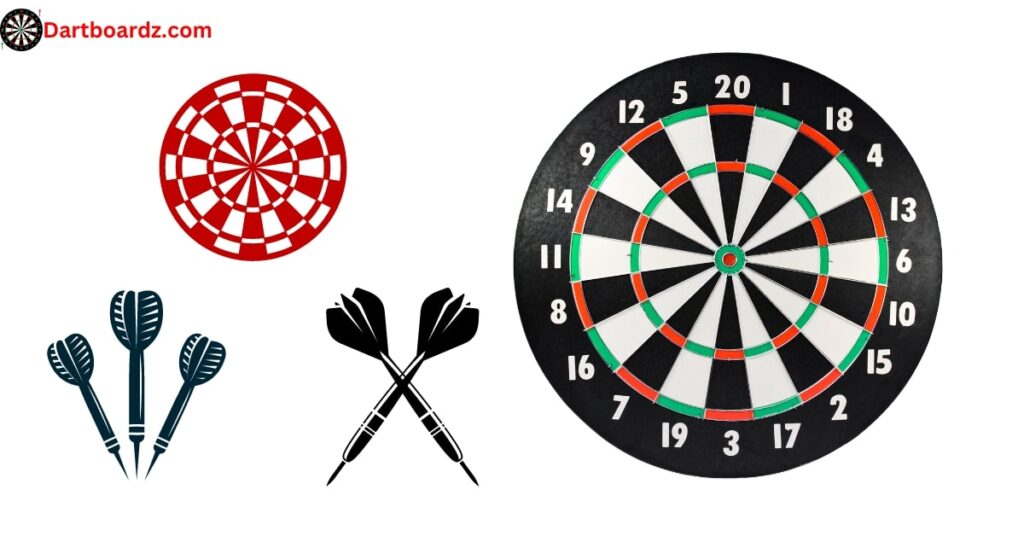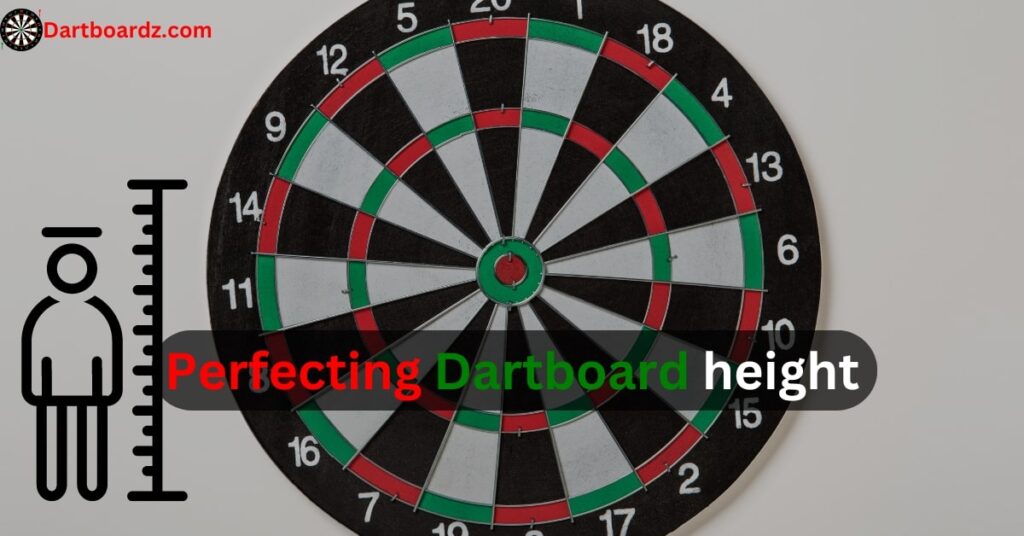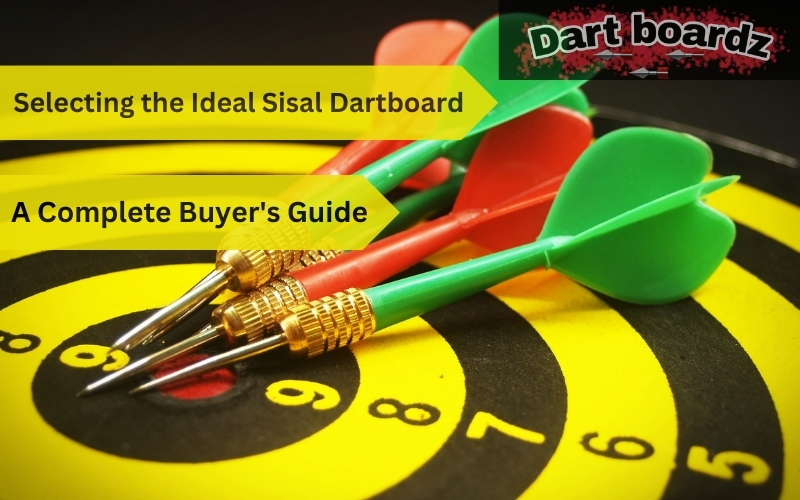Darts is a game that requires precision and strategy. To excel at this beloved pastime, mastering every aspect of your dart setup is essential. In this comprehensive guide.
we’ll explore the intricacies of dartboard height, dart distance, and additional factors to help you create the ultimate darting environment. Whether you’re a novice or a seasoned player, this expert advice will elevate your dart game to new heights.
Perfecting Dartboard Height
The height of your dartboard is crucial for accurate game play. A well-positioned dartboard ensures that players can throw comfortably and effectively, minimizing errors and maximizing scoring potential.
In addition to the standard height of 5 feet 8 inches (173 cm) from the floor to the center of the bullseye, consider various factors when determining the ideal dartboard height:
Player Height:Taller players may benefit from a higher dartboard placement, while shorter players may prefer a lower height for optimal throwing mechanics.
Mounting Stability:Ensure that your dartboard is securely mounted to the wall using appropriate hardware to prevent shifting or wobbling during play.
Viewing Angle:Position the dartboard at eye level to provide clear visibility of the scoring area for all players, reducing strain and optimizing focus during game play.
By meticulously adjusting the height of your dartboard to accommodate these considerations, you’ll create a playing environment that enhances accuracy and enjoyment for players of all skill levels.

Exploring Dart Distance Dynamics
Dart distance, the space between the throwing line and the dartboard height, significantly influences game play dynamics and strategy. Understanding the nuances of dart distance is essential for maintaining fair competition and maximizing player performance.
While the standard dart distance of 7 feet 9 1/4 inches (2.37 meters) is widely recognized in competitive play, consider experimenting with variations to suit your preferences and playing environment. Factors to consider include:
Room Layout: Optimize the dart distance to accommodate the dimensions of your playing area, ensuring ample space for players to move freely and throw confidently.
Player Comfort: Tailor the dart distance to the physical capabilities and preferences of the players, adjusting as needed to promote ergonomic throwing mechanics and reduce strain.
Game play Dynamics: Evaluate the impact of dart distance on shot selection, target accessibility, and strategic positioning to fine-tune your setup for optimal performance.
Customizing the dart distance based on these considerations will create a balanced and engaging darting experience that enhances skill development and fosters friendly competition among players.

Enhancing Your Dart Setup
In addition to dartboard height and distance, several elements can elevate your dart setup:
Lighting: Illuminate the dartboard area with bright, consistent lighting to enhance visibility and minimize shadows, allowing players to focus on their targets with precision.
Surround Protection: Invest in a dartboard surround or backboard to protect walls from stray darts and preserve the integrity of your playing space, minimizing damage and maintaining aesthetics.
Floor Protection: Place a durable mat or carpet beneath the dartboard to protect flooring surfaces from dart damage and promote safe, comfortable game play for players.
By incorporating these enhancements into your dart setup, you’ll create a welcoming and professional environment that enhances player satisfaction and prolongs the lifespan of your equipment.
Establishing a Practice Routine
Consistent practice is essential for mastering the art of darts and honing your skills over time. Establishing a structured practice routine can help you develop technique, improve accuracy, and achieve your darting goals.
Consider incorporating the following elements into your practice regimen:
Target Practice: Focus on specific areas of the dartboard to refine accuracy and consistency, gradually expanding your repertoire of scoring opportunities.
Skill Development: Experiment with different throwing techniques, grips, and stances to identify strategies that suit your playing style and maximize performance.
Game Simulation: Simulate competitive scenarios and pressure situations during practice sessions to build mental resilience and improve decision-making under stress.
By dedicating time and effort to regular practice, you’ll steadily progress as a dart player, unlocking new levels of proficiency and enjoyment with each throw.
Conclusion
Mastering your dart setup requires attention to detail and a commitment to continuous improvement. By optimizing dartboard height, exploring dart distance dynamics, enhancing your setup with additional elements, and establishing a structured practice routine, you’ll create an environment that fosters skill development, encourages friendly competition, and maximizes enjoyment for players of all levels. Embrace the challenge, refine your technique, and elevate your dart game to its fullest potential—it’s time to aim for greatness on the oche.
What is the standard height for a dartboard?
The standard height for a dartboard is 5 feet 8 inches (173 cm) from the floor to the center of the bullseye. This measurement ensures optimal game play and accuracy for most players.
How do I determine the ideal dartboard height for my setup?
When determining the ideal dartboard height, consider factors such as player height, mounting stability, and viewing angle. Taller players may prefer a slightly higher dartboard placement, while shorter players may opt for a lower dartboard height for optimal throwing mechanics.
What is dart distance, and why is it important?
Dart distance refers to the space between the throwing line (oche) and the dartboard. It is crucial for maintaining fair competition and ensuring that players of all skill levels can compete comfortably and effectively. Proper dart distance promotes consistent game play and enhances the overall darting experience.
What is the standard dart distance for competitive play?
The standard dart distance for competitive play is 7 feet 9 1/4 inches (2.37 meters) from the face of the dartboard height to the throwing line. This distance is widely recognized in official dart competitions and provides a balanced playing field for players of all abilities.
Can I adjust the dartboard height and distance to suit my preferences?
Yes, you can adjust the dart distance to suit your preferences and playing environment. Factors such as room layout, player comfort, and game play dynamics may influence your decision to vary the dart distance slightly from the standard measurement.




